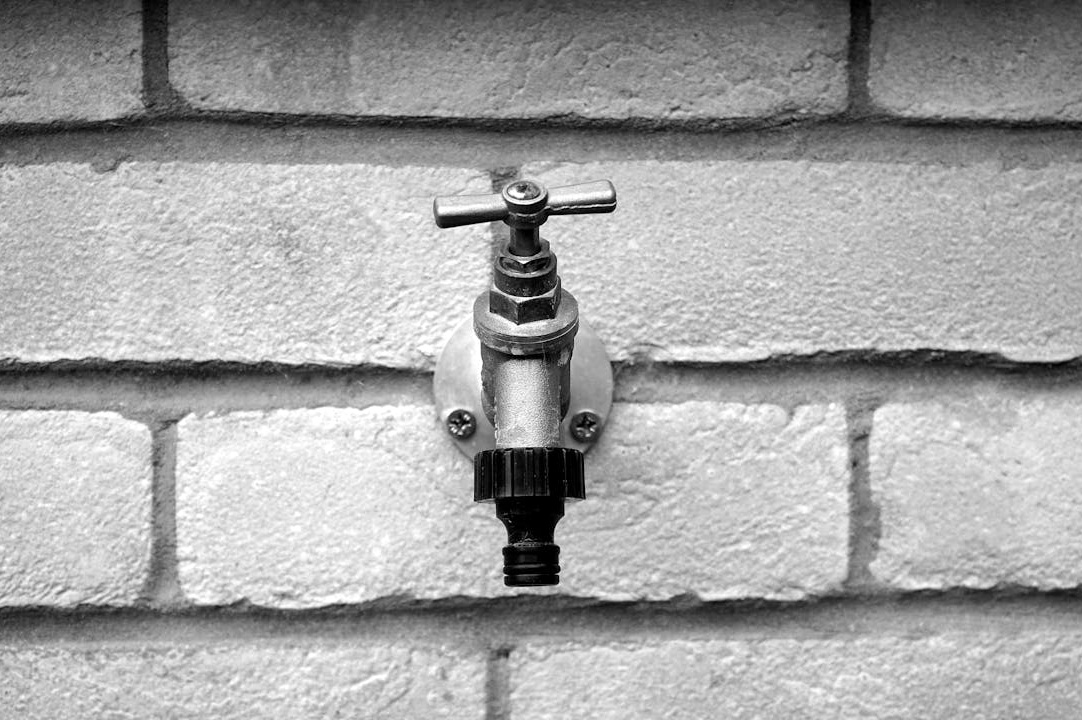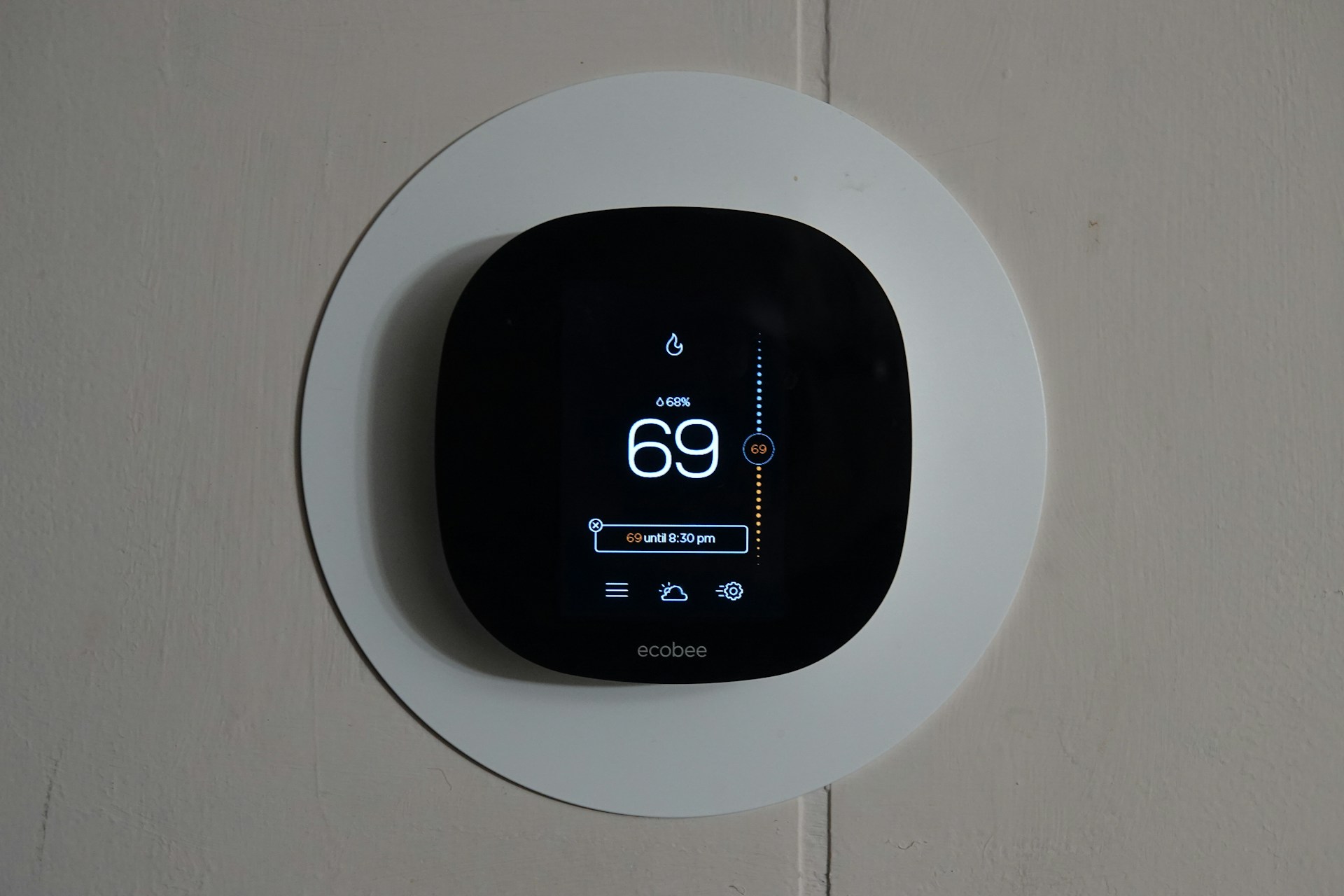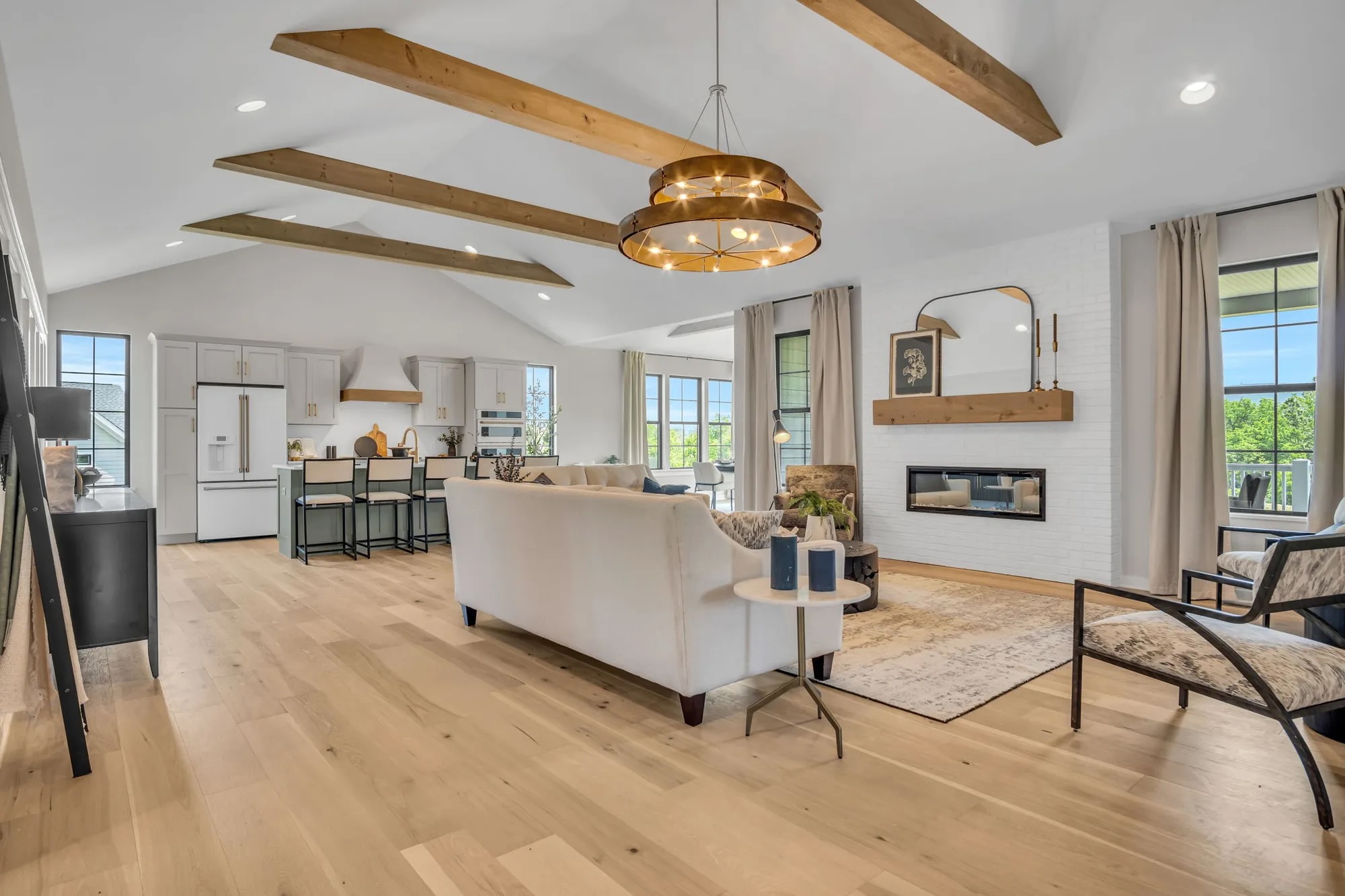Nest Notes
Smart Winterizing Tips to Protect Your Home Inside and Out

October 9, 2025
Winters in Pennsylvania can be beautiful, but they’re often anything but mild. Between lake-effect snow, freezing rain and sharp winds, the cold weather puts your home’s durability to the test. At Garman Builders, we’ve seen how winter can challenge every part of a home, from the roof shingles to the foundation. That’s why we always remind our homeowners that winterizing isn’t just about staying warm; it’s about protecting your investment.
With the right prep, you can keep your home warm, safe and efficient through the toughest stretch of the season. Here’s our inside-and-out guide to help you do just that.

1. Drain Outdoor Faucets Before The First Freeze
Even frost-free spigots can split if water is trapped inside. Before the first hard freeze, disconnect every garden hose, drain it and store it indoors (shed, garage etc). Then shut off the exterior water line from inside your home and open the outdoor faucet to let any remaining water escape. If you haven’t already, insulated faucet covers are an inexpensive way to add a layer of protection. They take minutes to install but can save hundreds in repair costs later.
2. Clean Gutters and Extend Your Downspouts
When leaves collect in gutters, they trap water that freezes, melts and refreezes, a perfect recipe for ice dams. Ice dams not only cause roof leaks but can also force water behind siding. A clean gutter lets melting snow move freely, preventing overflow near the foundation. While you’re at it, make sure your downspouts send water at least four to six feet away from the house. It’s a simple fix that can keep your basement dry when the thaw comes.
3. Prep Your Heating System and Safety Devices
A well-tuned furnace is the heart of a winter-ready home. Replace the air filter, then schedule a professional HVAC inspection before the cold sets in. According to Energy Star, routine maintenance can improve efficiency by up to 15 percent. Don’t forget safety, test your smoke and carbon monoxide alarms and replace batteries if needed. It’s also smart to keep a fire extinguisher in both the kitchen and the garage. You’ll probably never need it but it’s a layer of protection worth having.
4. Seal Drafts Around Doors and Windows
You might be surprised how much warm air sneaks out through tiny gaps. Weatherstripping, caulking and door sweeps can make an immediate difference in comfort and energy costs. For older windows, shrink-film kits or thermal curtains can add insulation without major renovation. A quick way to find leaks? On a windy day, hold a candle near frames and watch for flickering, it’s an old-school trick that still works.
5. Keep Vents Clear After Snowstorms
When snow piles up around the furnace, water heater or dryer vents, it can block airflow and trap exhaust gases. That’s a serious safety risk since carbon monoxide can back up into your home. After every major storm, check that exterior vents are open and clear. If you use a portable generator, keep it at least 20 feet away from your home and never run it in a garage or enclosed porch.
6. Test Your Sump Pump and Freeze-Proof the Line
Basement flooding isn’t just a spring problem. Sump pumps can fail in winter if discharge lines freeze. Test your pump by pouring water into the pit to confirm it activates. If the outlet pipe runs outside, insulate it or bury it below the frost line. Adding a freeze guard fitting gives excess water a place to go if the pipe ever freezes, protecting your system from burnout.
7. Fight Ice Dams From the Inside Out
Heat cables might seem like an easy fix for ice dams, but the real solution starts inside your attic. Warm air escaping from below melts snow unevenly on the roof. That water refreezes at the eaves and creates those thick ridges of ice. Sealing attic air leaks and improving insulation prevents that heat loss altogether. Don’t forget the attic hatch, insulate and weatherstrip it too. You’ll keep your roof cooler and your heating bills lower.

8. Dial Down Humidity As Temps Drop
When outdoor air gets colder, your home’s humidity should drop too. Otherwise, you’ll see condensation on windows and even mold on cold surfaces. If you have a whole-home humidifier, adjust it manually based on temperature or use the automatic setting if available. As a rule of thumb, aim for around 40–45% humidity at 40°F and closer to 25% when temperatures fall near zero. Portable hygrometers are inexpensive and make this easy to monitor.
9. Don’t Forget the Heat Pump or A/C
Outdoor units need breathing room year-round. Keep heat pumps clear of snow and ice buildup, but never chip them with tools; let the system’s defrost cycle do its job. For traditional air conditioners, a full cover can trap moisture and cause rust, so it’s best to leave them uncovered or use a simple top shield to block icicles. If you use window A/C units, remove them or insulate tightly around the frame to prevent drafts.
10. Check Your Dryer Vent Flap
The vent flap outside your home should close completely when the dryer is off and open freely when it’s running. If snow, lint, or debris keeps it open, you’ll lose warm air and possibly invite small animals looking for shelter. A quick check now can prevent both energy loss and unexpected guests later.
11. Add Leak and Freeze Sensors in Key Spots
Smart leak detectors can alert you at the first sign of trouble. Place them near your water heater, washing machine or under sinks. Many models include temperature sensors that warn you if a pipe is about to freeze. Some insurance companies even offer policy discounts for using them, so it’s worth checking with your provider.
12. Choose De-Icers That Won’t Destroy Your Concrete
Grabbing the cheapest bag of rock salt is tempting, but regular salt corrodes concrete and kills plants. Look for calcium magnesium acetate (CMA) or products labeled as pet- and concrete-safe. They’re gentler on your walkways and the environment while still preventing dangerous slips. For traction, you can mix in a bit of sand, which helps without the chemical wear.
13. Mark What Matters Before the First Snow
A few reflective stakes can save you a headache later. Mark the edges of driveways, walkways and hydrants before the snow flies. It protects your lawn, lights and irrigation system from snowplows or shovels. It also helps emergency services locate hydrants or pathways quickly if needed, a small step that can make a big difference.
14. Go Beyond Pipe Foam for Plumbing Protection
Insulating pipes in unheated spaces is important, but there’s more to do. Pour a little mineral oil into the basement or garage floor drains to prevent the traps from drying out and letting sewer gases in. If you have sinks along exterior walls, open cabinet doors during deep cold spells to let warm air circulate. For long-term peace of mind, add insulation between the wall and cabinet base to keep those pipes above freezing.
15. Use Ceiling Fans to Push Warm Air Down
Most ceiling fans have a small switch that changes the direction of the blades. In winter, set them to spin clockwise on a low speed. This gently pushes warm air down without creating a breeze. It’s especially helpful in rooms with tall ceilings or open floor plans where heat collects up high.
16. Check Condensate Lines on High-Efficiency Furnaces
If you own a high-efficiency furnace, it produces condensate that drains through a small plastic line. Make sure that line runs toward a warm drain and isn’t exposed to freezing air. Insulating it keeps the line clear and that’s important, if it freezes, your furnace can shut down completely. A quick look now can prevent a cold wake-up call later.

Built for Every Season
A well-built home should stand strong through every Pennsylvania season. Winterizing isn’t just maintenance, it’s stewardship. Taking time to prepare protects your home, keeps your family comfortable and ensures your systems last longer.
At Garman Builders, we design and construct homes with those same principles in mind. Every beam, finish, and seal matters because we know you’ll be living through sunny mornings and snowy nights. If you’re looking for a home designed to handle everything a Pennsylvania winter throws your way, now is the perfect time to take the next step. Schedule a tour of our South Central Pennsylvania communities and explore floor plans built for comfort, durability, and energy efficiency. Contact us today to find your warm, worry-free new home.


